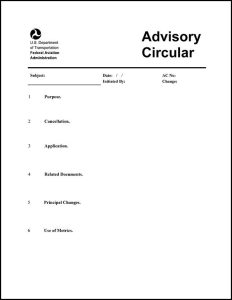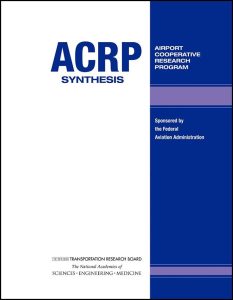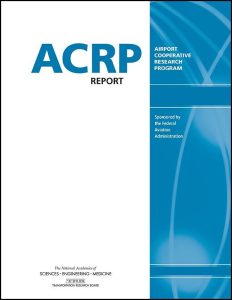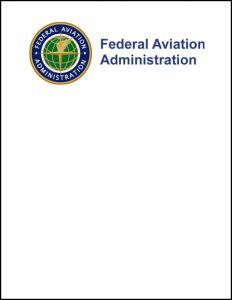To narrow the library of airside resources, use the filter boxes or airport map below or search box above.
Click an item below to expand.
Resources Matching Your Search
2022
This advisory circular (AC) contains the FAA standards and recommendations for airport design. The AC contains the following chapters: (1) Introduction, (2) Design Principles, (3) Runway Design, (4) Taxiway and Taxilane Design, (5) Aprons, and (6) Airfield Systems and Facilities. It also contains the following appendices: (A) Aircraft Characteristics, (B) Wind Analysis, (C) Jet Blast and Propeller Wash, (D) End-Around Taxiway Visual Screens, (E) General Aviation Facilities, (F) Compass Calibration Pad Survey, (G) Runway Design Standards Table, (H) Declared Distances, (I) Runway Additional Information, (J) Taxiway Additional Information, (K) Instrument Flight Procedures, (L) Approach and Departure Reference Codes, (M) Differences in Airport Design Standards and Relationship of Aircraft Characteristics to Design Components, (N) Acronyms, and (O) Index.
2017
This advisory circular (AC) establishes a common, uniform definition of critical aircraft for all deliberations of the FAA Office of Airports, inclusive of planning and environmental, design and engineering, and financial decision-making regarding airport development.
2007
ACRP Synthesis 2 examines how airport forecasts are used and identifies common aviation metrics, aviation data sources, issues in data collection and preparation, and special data issues at non-towered airports. The report also explores available forecasting methods, including the primary statistical methods, market share analysis, econometric modeling, and time series modeling. In addition, the report reviews forecast uncertainty, accuracy, issues of optimism bias, and options for resolving differences when multiple forecasts are available.
1983
This advisory circular (AC) provides guidance for noise control and compatibility planning for airports under Federal Aviation Regulation (FAR) Part 150 and the Aviation Safety and Noise Abatement Act of 1979 (ASNA) (P.L. 96-193). It is intended for use by airport operators, state and local planners and other officials, and interested citizens who may engage in noise control planning.
2005
This advisory circular (AC) provides guidelines for airport designers and planners to determine recommended runway lengths for new runways or extensions to existing runways. It contains sections for aircraft with maximum certified takeoff weight of 12,500 pounds, more than 12,500 pounds, and more than 60,000 pounds along with design rationale.
2013
ACRP Report 96 provides best practices for planning, designing, and marking apron areas for all sizes and types of airports in the United States. Apron planning and design considerations include facility geometrics, aircraft maneuvering, apron/airfield access points, operational characteristics, markings, lighting, and aircraft fleets. The report summarizes apron planning and design best practices for incorporating flexibility, increasing efficiency, and enhancing the safety of apron facilities.
2019
The data from this website portal helps the FAA collect airport and aeronautical data to meet the demands of the Next Generation National Airspace System. This tool allows airports to use the wind data to prepare a windrose for the airport.
2020
Part 1 provides guidance on the geometric design of runways and the airport elements normally associated with runways. It discusses runway configuration, runway length, airplane performance parameters affecting runway length, and planning to accommodate future aircraft. This resource is available at the ICAO store for $150.
2022
This webpage provides information on Airbus' Global Market Forecast (GMF) for 2022 to 2041 and offers a forward-looking view of the air transport sector's evolution.
2022
This document is a long-term forecast of commercial air traffic and airplane demand, including global and regional analysis. This has been the industry standard for insights into the future of air travel since 1961 and annually provides valuable analysis to airlines, suppliers, and the aviation community.
2019
This advisory circular (AC) provides information on community/public involvement in airport planning. This AC is intended to advise airport sponsors, planners, and the public on the benefits of early public participation in airport planning, and the methods by which this participation may be achieved.
2015
This advisory circular (AC) provides guidance for the preparation of master plans for airports that range in size and function, from small general aviation to large commercial service facilities. The intent of this AC is to foster a flexible approach to master planning that directs attention and resources to critical issues. The scope of each master plan must be tailored to the individual airport under evaluation.
1983
This advisory circular (AC) explains how to compute airport capacity and aircraft delay for airport planning and design. The consolidated file contains changes 1 and 2.
2011
ACRP Report 48 is designed to help airport operators and planners measure the impact of changes in jet fuel price on supply and demand for air service at commercial service airports. The report includes background research, a computer model, and a user manual. The output of the model can ultimately be used to help evaluate the impact of uncertainty on airport development and finance. Applying specific input parameters, the model, embedded in a user-friendly program, allows airport planners and managers to assess how fuel, economic, and other uncertainties may affect their airport and to test the sensitivity of varying assumptions about key drivers of airport activity.
2016
ACRP Research Report 163 explores the preparation and use of airport design day flight schedules (DDFS) for operations, planning, and development. The guidebook is geared towards airport leaders to help provide an understanding of DDFS and their uses, and provides detailed information for airport staff and consultants on how to prepare DDFS.
2013
TRB conducted a webinar that featured research conducted by ACRP on providing airport operators and planners with tools and methodologies designed for incorporating uncertainty into air traffic and fuel price forecasting methods. The ACRP reports presented in this webinar will provide airport managers, operators, and planners with techniques for measuring and characterizing the uncertainty inherent in trend-based projections of requirements of airport users and stakeholders.
2016
TRB conducted a webinar that features research conducted by ACRP which discusses issues to consider while planning and developing an airport capacity enhancement project. Because large capital projects can take many years to complete, projects may depend upon the support from airport sponsors, users, and stakeholders. Success may also depend on planning for sufficient resources early in the overall project.
2015
TRB conducted a webinar that featured research conducted by ACRP on airfield safety considerations. Webinar presenters discussed best practices and practical applications for designing aircraft aprons (with safety in mind). They also discussed how to manage risk from aircraft overrunning, undershooting, or veering off the runway.
2015
TRB conducted a webinar that featured research conducted by ACRP specific to general aviation airports. Special topics of concern included back-country airstrip preservation and evaluation methods for obtaining aircraft operations counts at non-towered airports.
2014
ACRP Report 104 helps airports and their stakeholders understand, select, calculate, and report measures of delay and capacity. The report describes common metrics, identifies data sources, recommends the most appropriate metrics based on user needs, and suggests ways to improve metrics.







